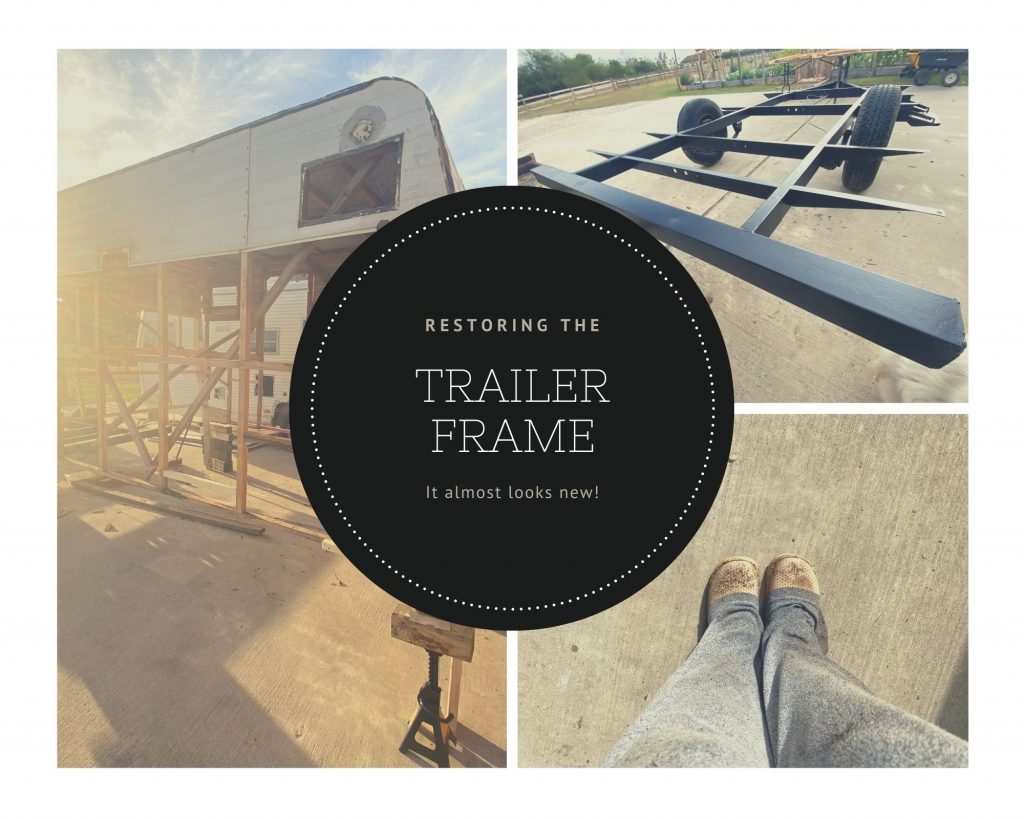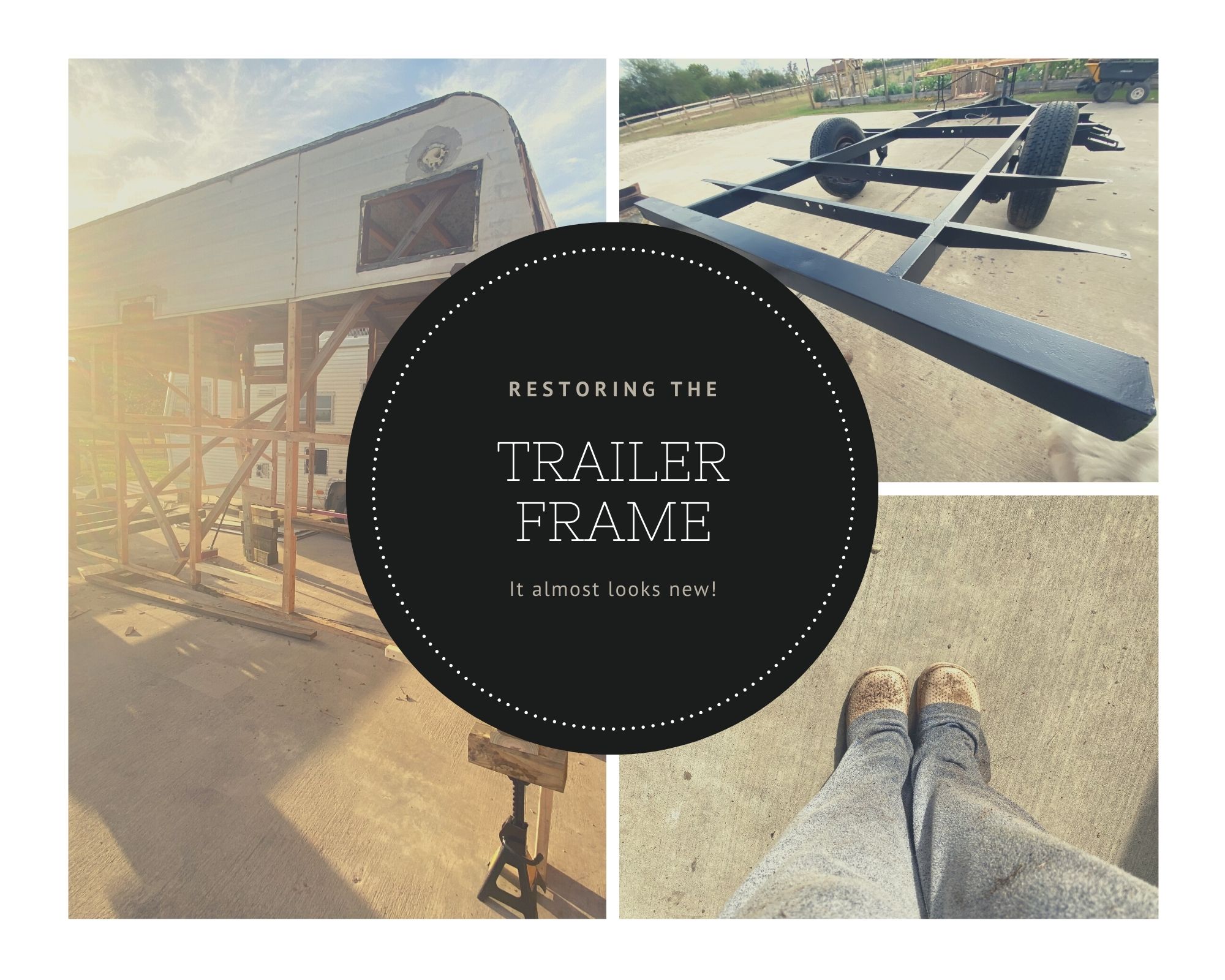
Giving new life to a 12′ 1967 Golden Falcon.
The floor was in pretty good shape with only the back portion being a concern. At some point, the back window was leaking pretty heavily and it ruined the subfloor. The window was fixed (sloppy does not even come CLOSE to describing HOW the window was fixed, but it did not leak anymore.) After much discussion, we thought it would be *easiest* to replace the back portion of the floor by lifting the box up and rolling the trailer frame out.

And there you have it! Using scrap wood, the corners were lifted a little at a time until the whole box was able to clear the wheel wells. We attached 2×4’s to each corner as support legs and rolled out the floor/trailer.

Next came the task of attacking the floor. We flipped it upside down on a table and Wade pulled out 8 million staples from the underside. The floor, from the ground up, consisted of a coated cardboard layer, a grid 2″x2″ frame with insulation, and the plywood subfloor…with paper from linoleum still attached.

You can really see the damage on the back part of the floor here. The plan was to replace some of the grid wood that was damaged, add some more support, and replace just this section of plywood.

While Wade worked on the floor, I started on the trailer frame. Rather than investing in a sandblaster, we found a simple attachment for a power washer that turns it into a wet sandblaster. We’ve talked about getting a sandblaster for other uses, but the biggest issue seems to be having a powerful enough compressor to run it. We are not going to use it enough to justify spending what it would take to get a pro model, so this solution worked for what we needed. It does have it’s limitations…like you MUST use DRY, filtered sand (we used filtered pool sand), it still clogs even with filtered dry sand, it uses a TON of sand, the sand comes out sporadically and not consistently…



We live in the hot and humid south. The morning after sandblasting, there was a nice coat of orange rust. I brushed the frame with a stiff brush and applied this magical stuff called Corroseal. It converted the rust to a metal primer. It was seriously AMAZING stuff! From reading reviews, the biggest thing was to be very generous with the application. It has the consistency of watered down glue, and sort of smells like it.



In the morning, there was some small pinholes of rust. Again, we live in the hot HUMID south. Another coat would have probably been warranted at this point, but I was too anxious to paint!

There was nothing really special about painting. We used “farm implement” paint from TSC. I figured that would hold up just as well as anything! The frame got 3 coats.

We finished up the floor and put it back on the trailer frame.


Rather than lining the bottom (road facing) with cardboard, or even tar paper, we opted to use a very thin sheet of aluminum. This would protect the underside from road debris and also keep out critters!




The last part before putting the box back on was to get the paper from the linoleum off of the subfloor. Lesson learned here…spend the money to just buy 2 new sheets of plywood! It is not worth losing your sanity trying to scrap off 50+ year old linoleum glue!!!


The very last thing before bolting the floor back to the frame and lower the box back onto it, was giving it a good coat of Kilz for its mildew resistant quality.

